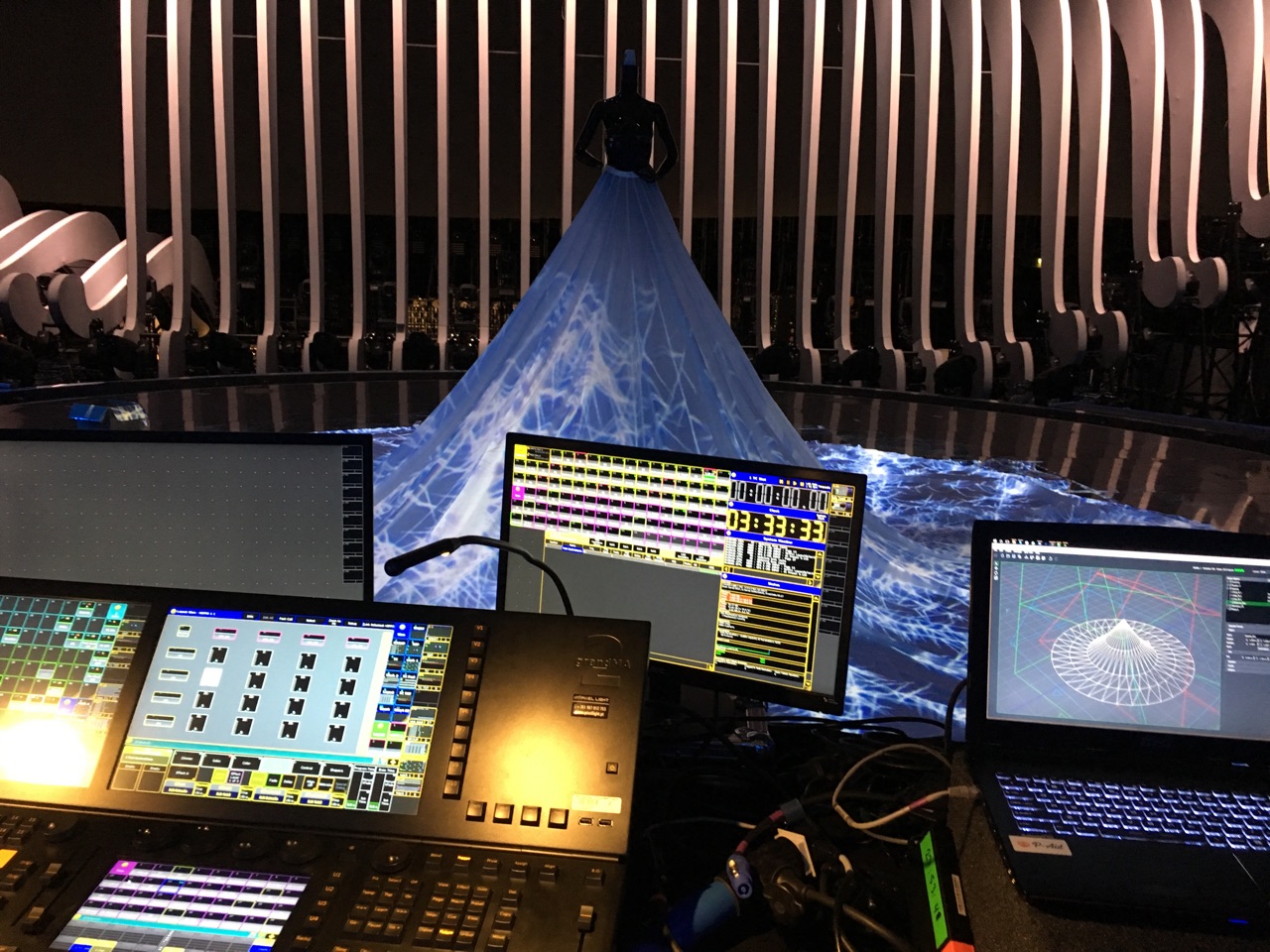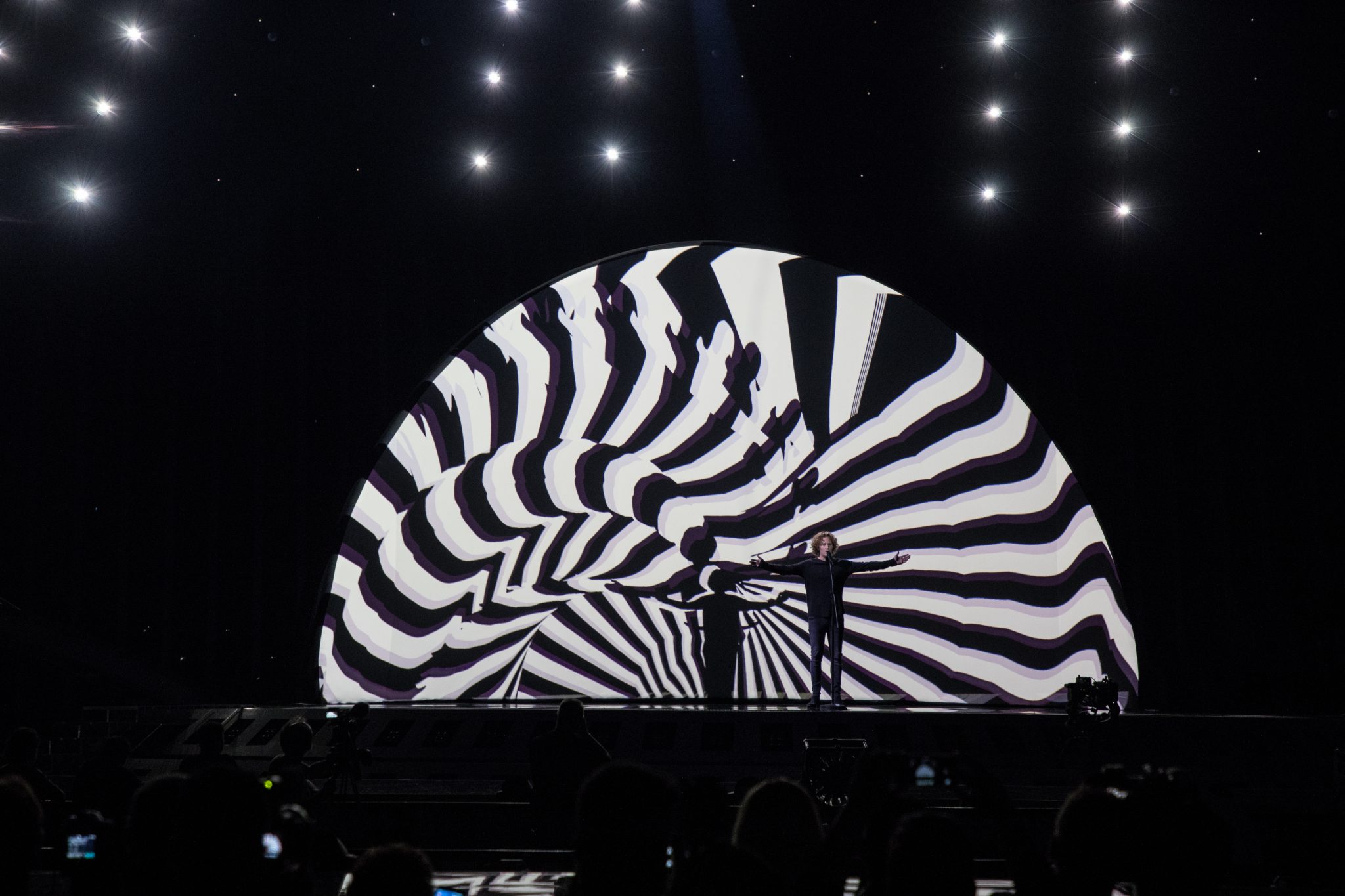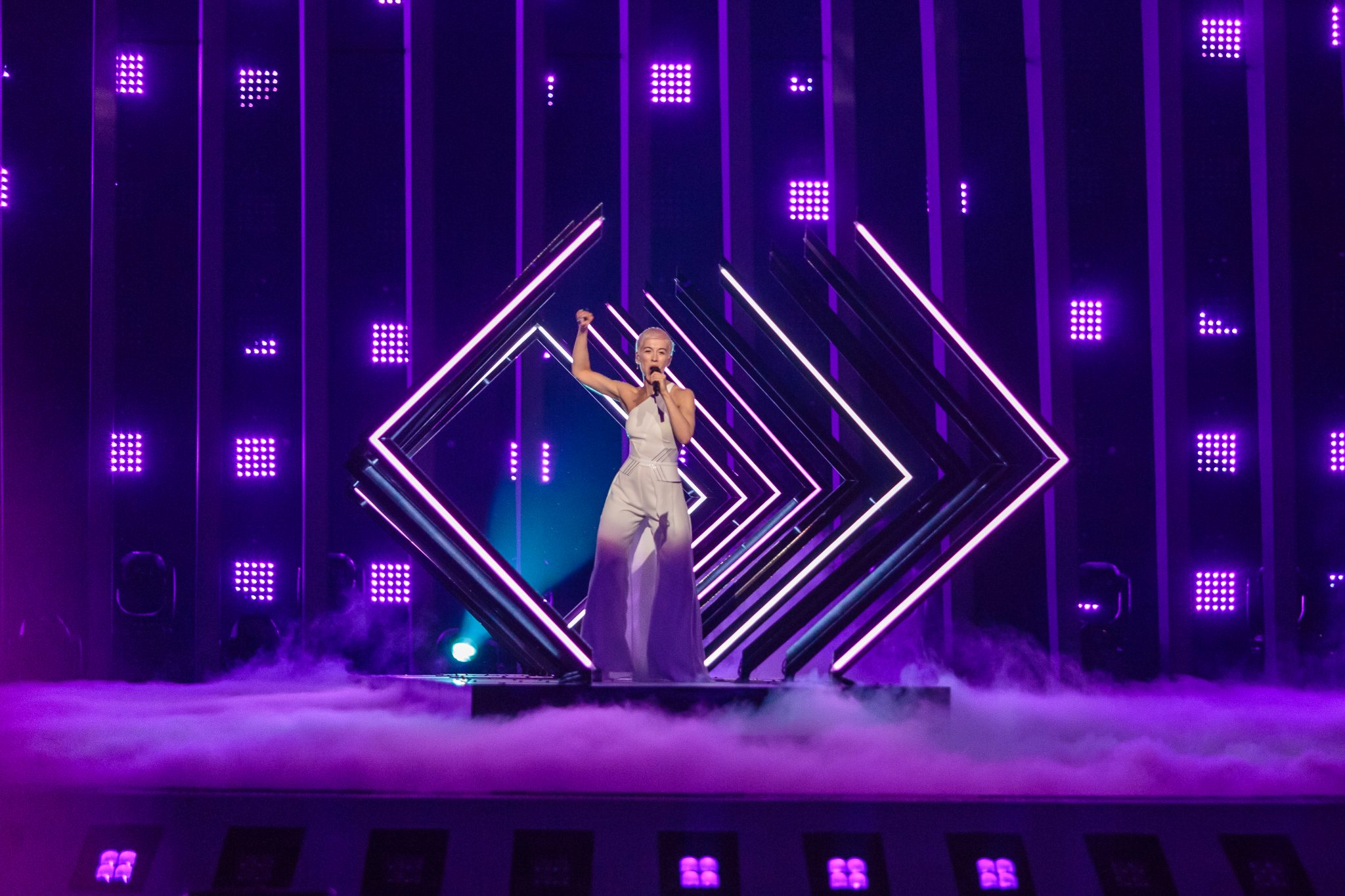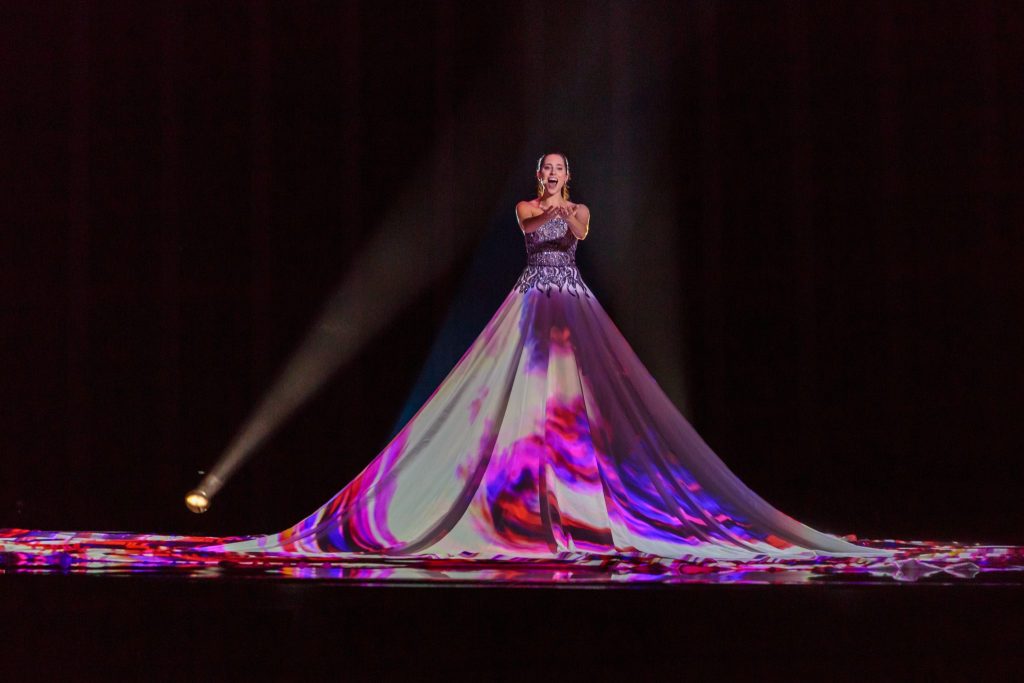Eurovision 2018 saw over 200 million people witness a spectacular example of what 3D projection mapping can do. Elina Nechayeva, representing Estonia, was the sixth act up, and her dress was the talk of Lisbon and beyond. Measuring 52 sq meters, yet weighing just around 8kg, Elina’s outfit acted not only as an elegant dress, but also a projection screen, displaying visuals to mirror the story of her La Forza song – a blossoming, dreamlike love.

Estonia was not alone in employing the latest visualisation techniques to great effect. The German entry featured 3D mapping projected on to an inflatable projection screen, while Russia’s semi-final performance scaled the heights with its projection-mapped mountain. The UK performance, powerfully sung by the mightily composed SuRie, employed pixel mapper, while LED tubes were used by countries, including Australia, Belgium, Malta, and Sweden.
 Eurovision 2018 – Germany – Michael Schulte, You Let Me Walk Alone @ Altice Arena, Lisbon, Portugal, Image supplier: © The Fifth Estate ltd.
Eurovision 2018 – Germany – Michael Schulte, You Let Me Walk Alone @ Altice Arena, Lisbon, Portugal, Image supplier: © The Fifth Estate ltd.
We caught up with Nick Charalampidis, Media Server Desk Operator at the show and he told us a little about the planning and execution of this challenging annual event.
How did you get involved in this year’s Eurovision?
Originally the production was not going to use video content, so I was not booked for the show until later in the process. However, some of the delegations decided they wanted their own video element, so I became part of Jerry Appelt’s (lighting designer) team.
Who decides on the video content for each performance?
Each delegation is responsible for its own video content, making sure it is in the right format for me to easily work with. Most of the video relates to LED screen props and projection mapping.
Tell us about the key gear you used?
I was working with Green Hippo, namely its Hippotizer Boreal+. The servers were bought by FABER, which is based in Netherlands and sub-hired to main Eurovision supplier Ampco Flashlight. Ampco provided all the lighting, rigging, trussing projection and LED to the Eurovision production. I also used two MA Lighting consoles for playback – one active, one backup – plus a pair of NPU (network processing unit).
Content was a mixture of 3D and LED – how did you manage this mix?
We decided on using two independent systems – one was SHAPE for all the 3D elements, and the other, to take care of all the different resolutions of LED technology, was standard Hippotizer. We also had two more units running in the background as redundant back-ups.
Working with so many delegations (countries) must bring some challenges?
Indeed! We used SHAPE to do all the 3D projection mapping on Russia’s rock, Estonia’s dress, and Germany’s inflatable projection screen. All content comes directly from the delegations – we specify what we need in terms of resolutions and codecs, etc. One challenge is that the video doesn’t come from a single supplier, so is not organised in the same way. Also, the props are of differing build and technical quality.
SHAPE has been great help in getting through our 3D production workflow fast. We had support from Green Hippo in the shape of Lanz Short. Lanz helped out with the pre- production and workflow for all the video clips making sure the models were right, the codecs were correct and that the mapping was on target. We could also adjust brightness and contrast live which was very helpful. We could easily see projector coverage and preview. We could also edit our 3D model in real-time. It made projector alignment and image blending and warping easy.
Full disclosure – you are a former member of the Green Hippo family, but other than keeping us happy, why do you still choose to work with Hippo tech?
I choose to use Green Hippo because of the flexibility and stability it offers, because I can access the network from anywhere I want and because media management control GUI interface is simple and intuitive – it is also very simple to adjust media live which is crucial to me.
The Eurovision Grand Final is a massive undertaking for a live TV show – tell us about how the organiser mitigates for issues during the broadcast?
Eurovision films two dress rehearsals with an audience, and the rehearsal is broadcast and recorded live as well. This gives us two copies of recordings that can be used in emergency during the final.
We love a bit of tech talk – can you take us on a deep dive into your Eurovision 2018 names and model numbers?
I used the latest version of Green Hippo SHAPE 3D Mapping with three different models. I love the flexibility of SHAPE in that it lets you adjust the 3D models on the fly, as well the mesh, the UVs, and quick alignment of the objects. Seven Panasonic 31K laser models looked after media props and onstage video, with a further six taking care of audience screens. Australia and Sweden’s LED products were ROE Tubes. For Malta, we also used Brompton processors, and a ROE Black OnyX 2.8ml screen. Light Initiative supplied props for the United Kingdom’s performance.
Green Hippo product specialist Lanz Short, aka Lanz @ Short-Notice, flew out to join you during programming week. What did you guys get up to?
Lanz supported me on SHAPE. It was really handy to have him on board, as he freed up my time to focus on programming. Lanz looked after some of the 3D SHAPE programming, thoroughly checking all the UV mappings that we received from the delegations – before we went into full mapping on stage.
What thoughts did you take away from Eurovision 2018?
The show is run from timecode – what did they do before timecode?! Standby, three, two, one, go!
Thanks, Nick, for your enlightening insights into Eurovision 2018 – until the next time!
 Eurovision 2018 – UK – SuRie, Storm @ Altice Arena, Portugal. Image Supplier © The Fifth Estate ltd.
Eurovision 2018 – UK – SuRie, Storm @ Altice Arena, Portugal. Image Supplier © The Fifth Estate ltd.
